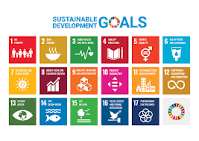CHANGING MINDSETS ON DISABILITY: FROM STIGMA TO INCLUSION
Disability has historically been surrounded by stigma and misunderstanding in many societies, and Nepal is no exception. For decades, people with disabilities in Nepal have faced social exclusion, discrimination, and limited opportunities, shaped by cultural attitudes that often viewed disability through lenses of superstition, pity, or charity rather than rights and inclusion. However, in recent years, there has been a significant shift in mindsets toward recognizing disability as a matter of human rights and social justice, fostering a growing movement from stigma to inclusion.
Traditional beliefs and cultural
perceptions have long influenced how disability is understood in Nepalese
society. Disability was often seen as a result of karma or divine punishment,
leading to marginalization not only of individuals but sometimes of entire
families. This association fueled fear, shame, and silence, discouraging open
discussion and access to services. People with disabilities were frequently
hidden away, denied education, and excluded from community life, perpetuating
cycles of poverty and isolation.
The tide began to change as Nepal
embraced international conventions such as the United Nations Convention on the
Rights of Persons with Disabilities (CRPD), ratified in 2010, which framed
disability within a rights-based approach. This paradigm shift emphasized
accessibility, empowerment, and participation as fundamental principles.
Disability advocacy groups and non-governmental organizations have played a
crucial role in raising awareness, promoting inclusive education, and lobbying
for policy reforms that recognize the dignity and potential of people with
disabilities.
Education has been a critical arena for
transforming mindsets. Inclusive education initiatives in Nepal aim to
integrate children with disabilities into mainstream schools, challenging
stereotypes and fostering understanding among peers. These efforts not only
improve academic outcomes but also cultivate empathy and acceptance from an
early age, laying the groundwork for a more inclusive society. Although
challenges such as inadequate resources and trained teachers remain, the
progress signals a hopeful trajectory.
Employment and social participation
also reflect evolving attitudes. Programs supporting vocational training and
accessible workplaces enable people with disabilities to contribute
economically and socially. Media representation and public campaigns
increasingly highlight stories of empowerment and capability, countering
long-held prejudices and inspiring broader societal acceptance.
Despite these advances, stigma and
barriers persist, especially in rural areas where traditional beliefs remain
strong and infrastructure is limited. Overcoming these obstacles requires
continued education, community engagement, and enforcement of disability rights
laws. It also demands shifting perceptions beyond mere tolerance toward genuine
inclusion and celebration of diversity.
In conclusion, Nepal is witnessing an
important transformation in how disability is perceived and addressed. Moving
from stigma to inclusion involves not only changing laws and policies but also
deeply altering cultural attitudes and social practices. Embracing this change
holds the promise of a more equitable society where all individuals, regardless
of ability, can live with dignity, participate fully, and contribute their
unique talents to Nepal’s future.

Comments
Post a Comment